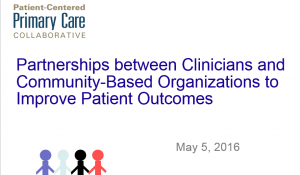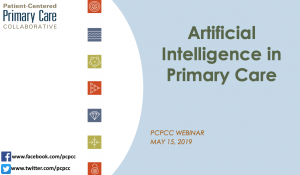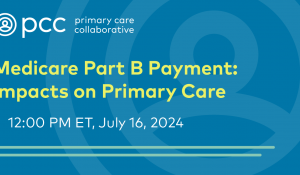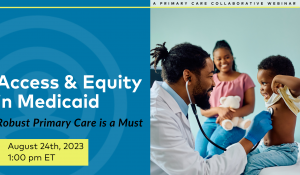You are looking at an archived version of our site. Please visit thepcc.org for a fresh, new experience!
Comprehensive and Equitable

- Primary care addresses the whole-person with appropriate clinical and supportive services that include acute, chronic and preventive care, behavioral and mental health, oral health, health promotion and more. Each primary care practice will decide how to provide these services in their clinics and/or in collaboration with other clinicians outside the clinic.
- Primary care providers seek out the impact of social determinants of health and societal inequities. Care delivery is tailored accordingly.
- Primary care practices partner with health and community-based organizations to promote population health and health equity, including making inequities visible and identifying avenues for solution.
Resources
June 2024
Population Health Management - October 2022
Annals of Family Medicine - October 2022
Society of Teachers of Family Medicine - July 2021
Journal of General Internal Medicine - March 2021
Annals of Family Medicine - January 2020
How to Identify, Understand, and Unlearn Implicit Bias in Patient Care - July 2019
Preventive Medicine - January 2019
Healthy people 2020 - December 2018
This resource focuses on three components of access to care: insurance coverage, health services, and timeliness of care. All of these are important parts of access, as access cannot be truly achieved without the consideration of all three. It also discusses some barriers to access and how they can be overcome. Access is important to eliminating health disparities and ensuring that individuals have equitable care across demographics.
The Center for Consumer Engagement in Health - May 2018
The Center for Consumer Engagement in Health Innovation works to uplift voices of the underserved to make health systems and research more equitable in communities. They work toward practical solutions for community-minded care and focus on serving vulnerable populations.
Journal of the American Board of Family Medicine - January 2018
Available for purchase on various online outlets - January 2018
Harvard Medical School Center for Primary Care - July 2017
The model of Direct Primary Care is a subscription-based model aiming to circumvent the barriers posed by coding and payment schemes in traditional fee-for-service care. This model improves continuity as well as accessibility of care for patients. It also works to focus on the patient as a person rather than focusing on the payment scheme, making care more equitable.
The Development of an Indigenous Health Curriculum for Medical Students - May 2017
Toolkit for Teaching About Racism in the Context of Persistent Health and Healthcare Disparities - May 2017
Healthcare Informatics - June 2016
This roadmap describes a trend towards population health management and value-based payment models through the patient-centered medical home (PCMH). It details the importance of comprehensive primary care that includes behavioral health, social workers, and community services. This resource acts as a guide to help practices transition to value-based care.
Milbank Memorial Fund - May 2016
This report identifies the root causes for states not making overall budget and policy decisions that optimize their population’s health. It summarizes how some communities are investing in social services to prevent downstream health care problems. The strategies were diverse based on the different populations, but show a great example of comprehensive and equitable care in the communities.
Curr Probl Pediatr Adolesc Health Care - May 2016
NASHP - August 2015
Dental care is an important part of comprehensive primary care, especially for children and young adults. This resource explores how a collaboration between safety net programs and oral health providers helps to create access for vulnerable populations, leading to more equitable care.
Webinars
Secondary menu
Copyright © 2024 Primary Care Collaborative
























